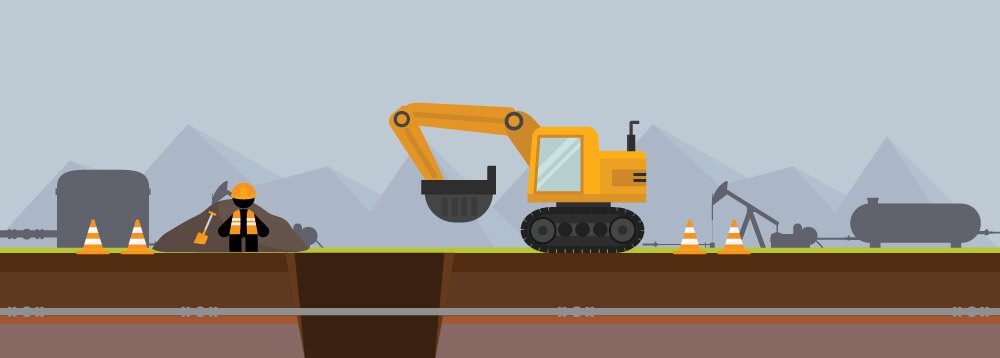Making a mistake at work is never a good thing. There are some jobs, however, where a mistake can be a really, really, really bad thing. Various professions spring to mind. Surgeons, for instance. Or pilots. Less obvious, but no less daunting, are the inherent risks faced by utilities maintenance crews on a daily basis. If maintenance crews accidentally hit a water main, you flood the street. If you hit a gas main – KABOOM! –say goodbye to the street altogether…
In the US, anyone planning to dig any kind of large hole can call 811 and receive the underground maps needed to safely guide the excavation. These are updated all the time, so for a utilities crew covering a large region for a utilities company, it’s extremely important (KABOOM!-level important) that they’re using the most up-to-date version.
Ideally, a utility company would have its maintenance crews download these updates on-the-go, but this is easier said than done. That’s why one of the largest natural gas utility and delivery companies in the US, relies on 1E Nomad for robust, remote content distribution.
This particular company’s maintenance crews travel with MDTs (mobile device terminals). While trucks will sometimes be found at satellite depots with network connections, more often than not they are out in the middle of nowhere, at the side of a road, digging a hole, and totally dependent on a cellular connection for communications. With those all-important updated maps equating to about 4GB worth of data, the utility company was sending CDs and DVDs to their crews to deliver the updated maps. Users would then have to manually update their MDTs, while the customer company had no way to establishing whether or not the updates had been successfully delivered.

The challenges of roadside content delivery created a scenario crying out for 1E’s Enhanced SCCM solution, Nomad. 1E Senior consultant John DeVito explains:
“The big thing that the customer wanted to accomplish was to be able to transfer the map data over the network, get validation that the content had been received from the mobile device terminals, and for the MDTs to automatically determine the most efficient method for retrieving the content. When they were on the 3G or the 4G networks, the machines would reach out to a Configuration Manager distribution point to get their content, but Nomad would throttle the bandwidth, so the data would trickle down to the machines and not over-utilize the cellular data link.”
Additionally, when a service vehicle pulled into a depot or satellite facility, Nomad enabled the data transfer to automatically switch from the cellular connection to the wireless, and to make use of Nomad’s unique peer-to-peer connection.
“Some of these satellite offices still had to go through a slower WAN link to get back to the Configuration Manager distribution point,” explains DeVito. “Ultimately, the most efficient thing would be to share peer-to-peer.”
Nomad, in short, was able to fit the customer’s needs to a ‘T’. I ask DeVito if, besides other utility companies, he could think of any other use cases this one pointed in the direction of?
“I’m just throwing this out there, but what about police departments? They all have laptops in their cars, and these laptops need to get security patches. When they’re driving around they need to have some remote connection, and when they pull into the police station it should switch over.”
Law enforcement? Sounds like another example of a high-risk profession where Nomad could make a critical difference.



